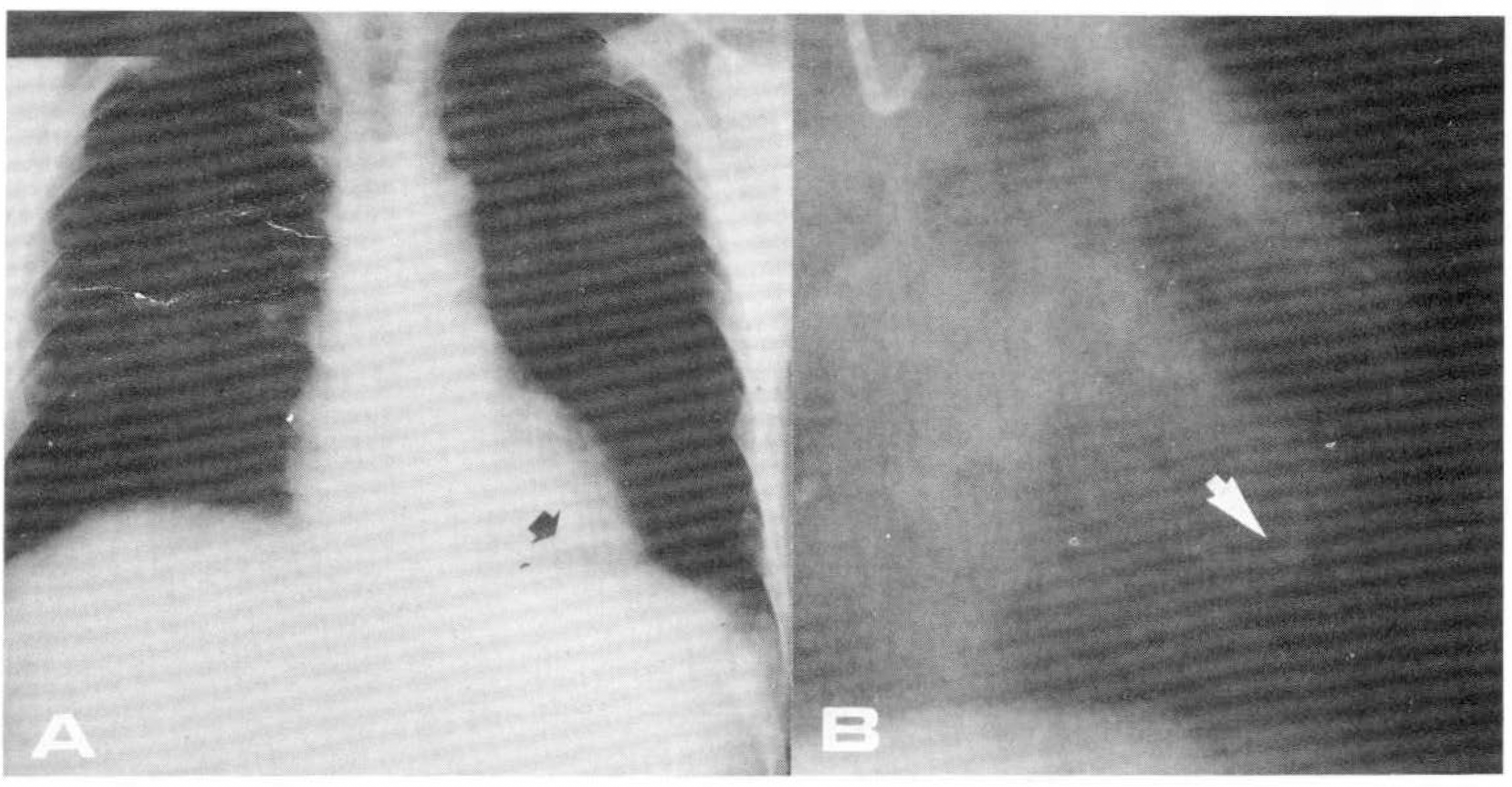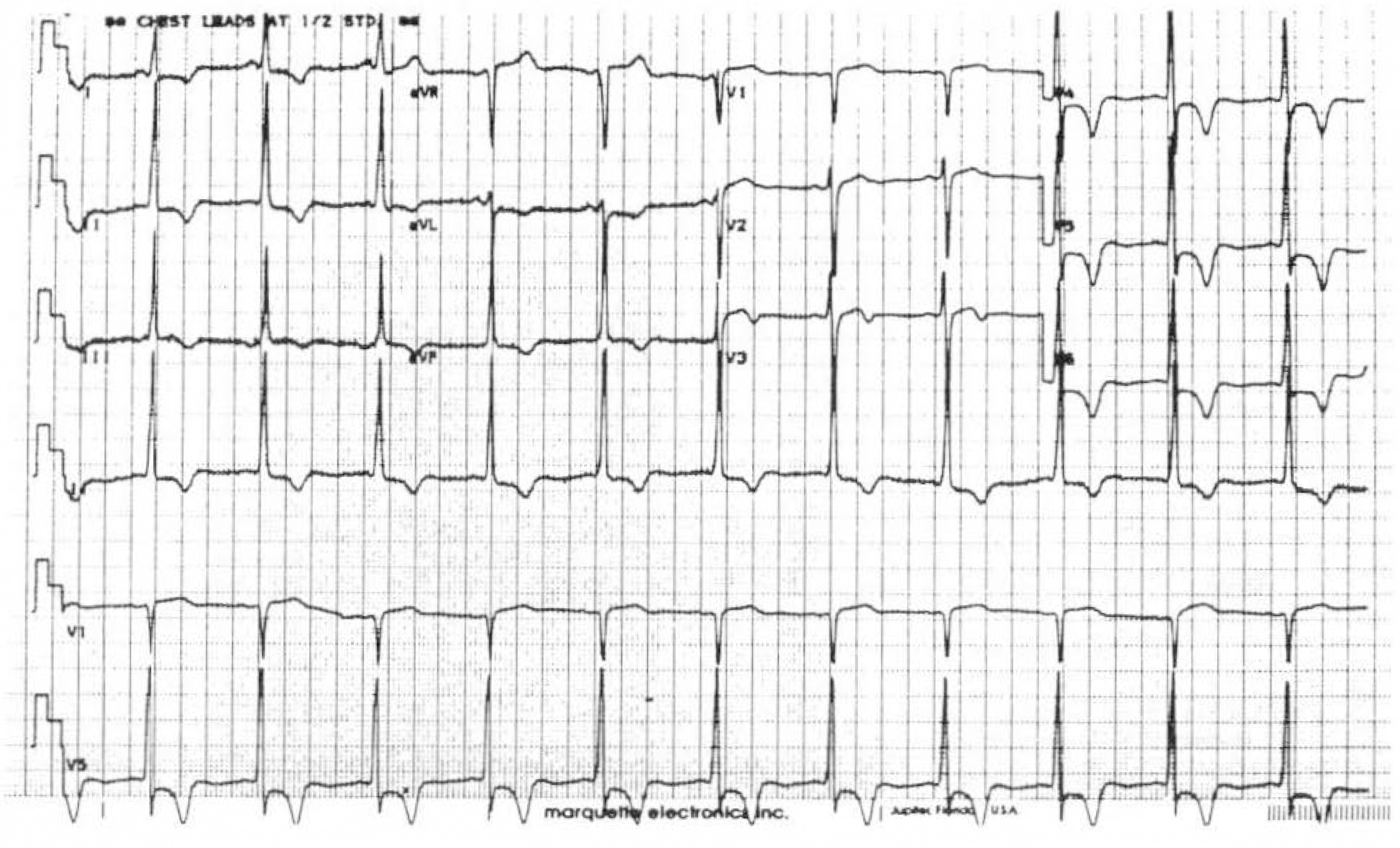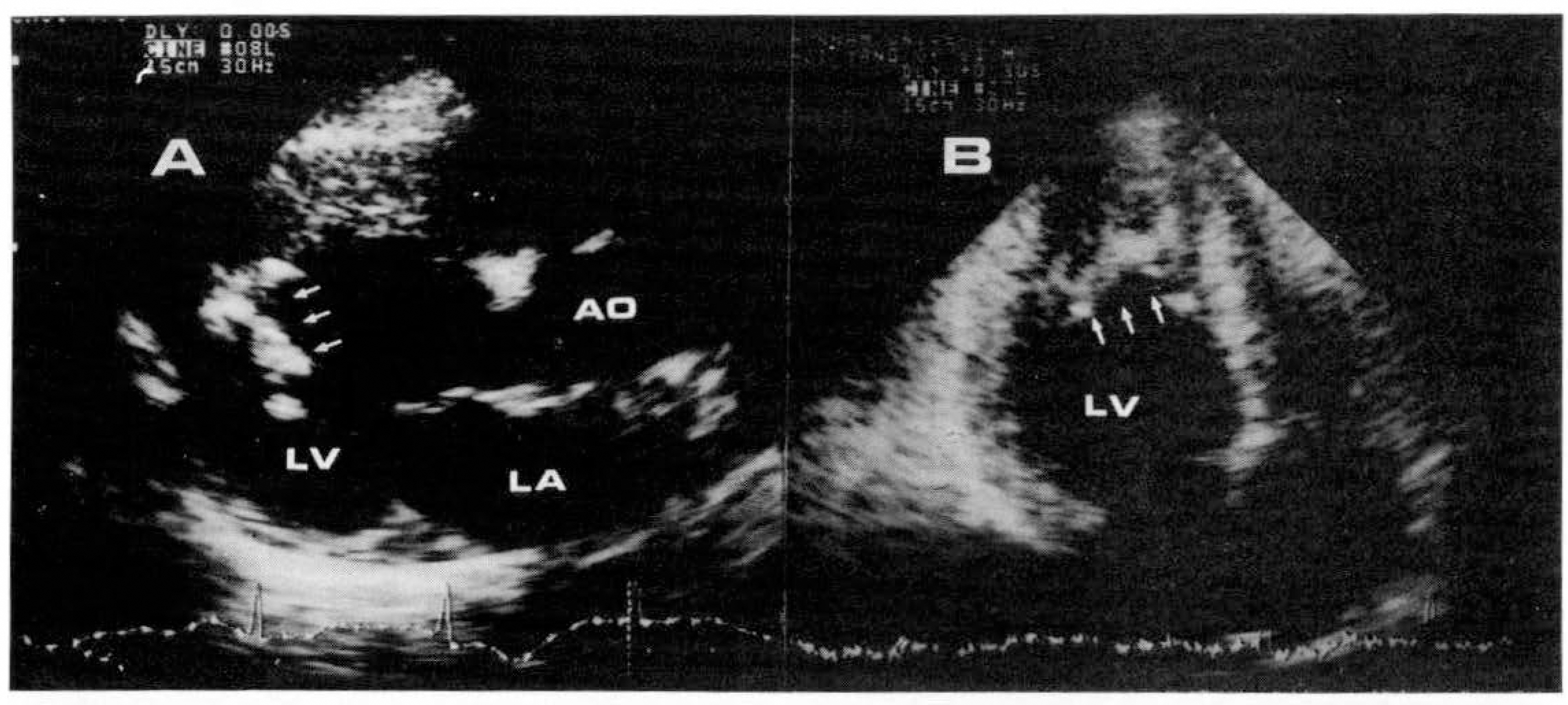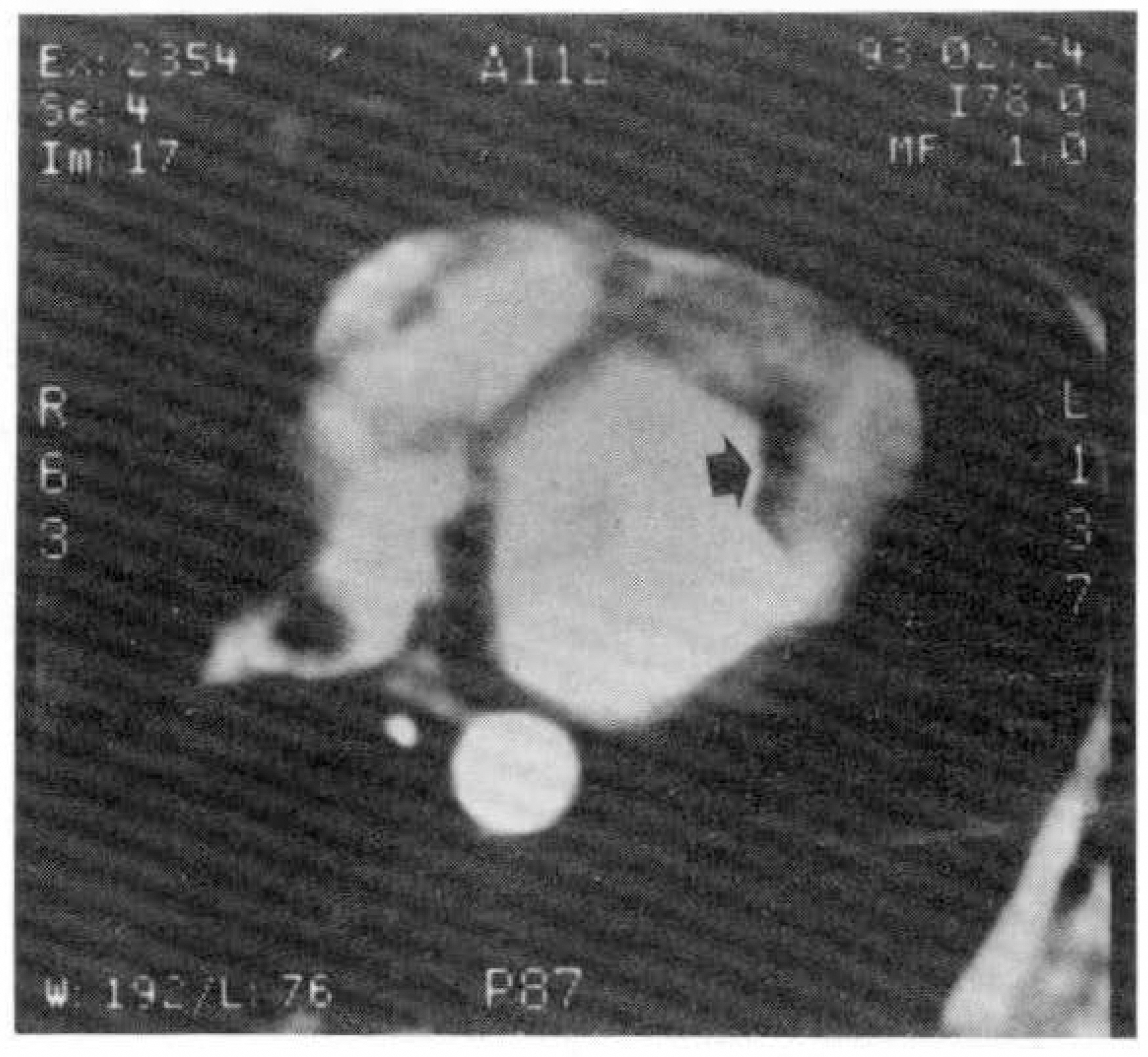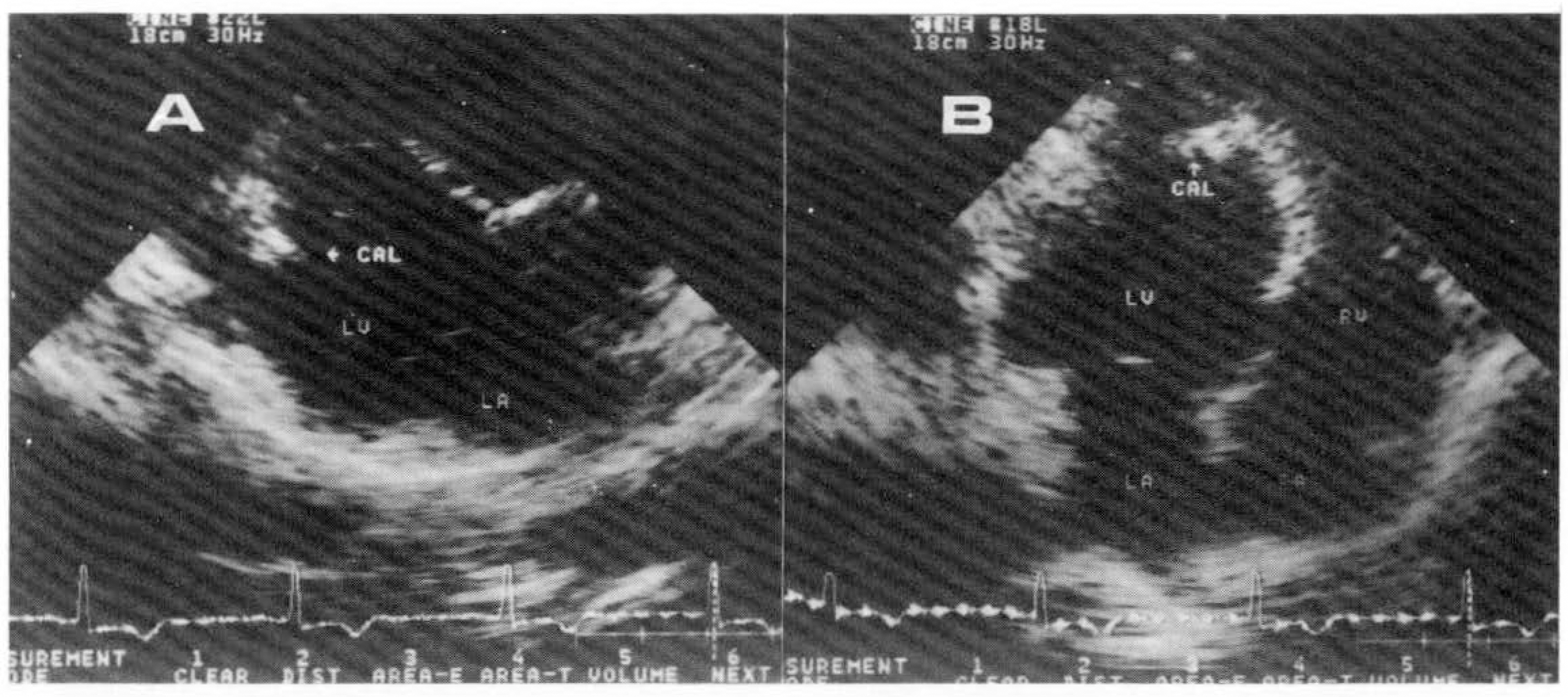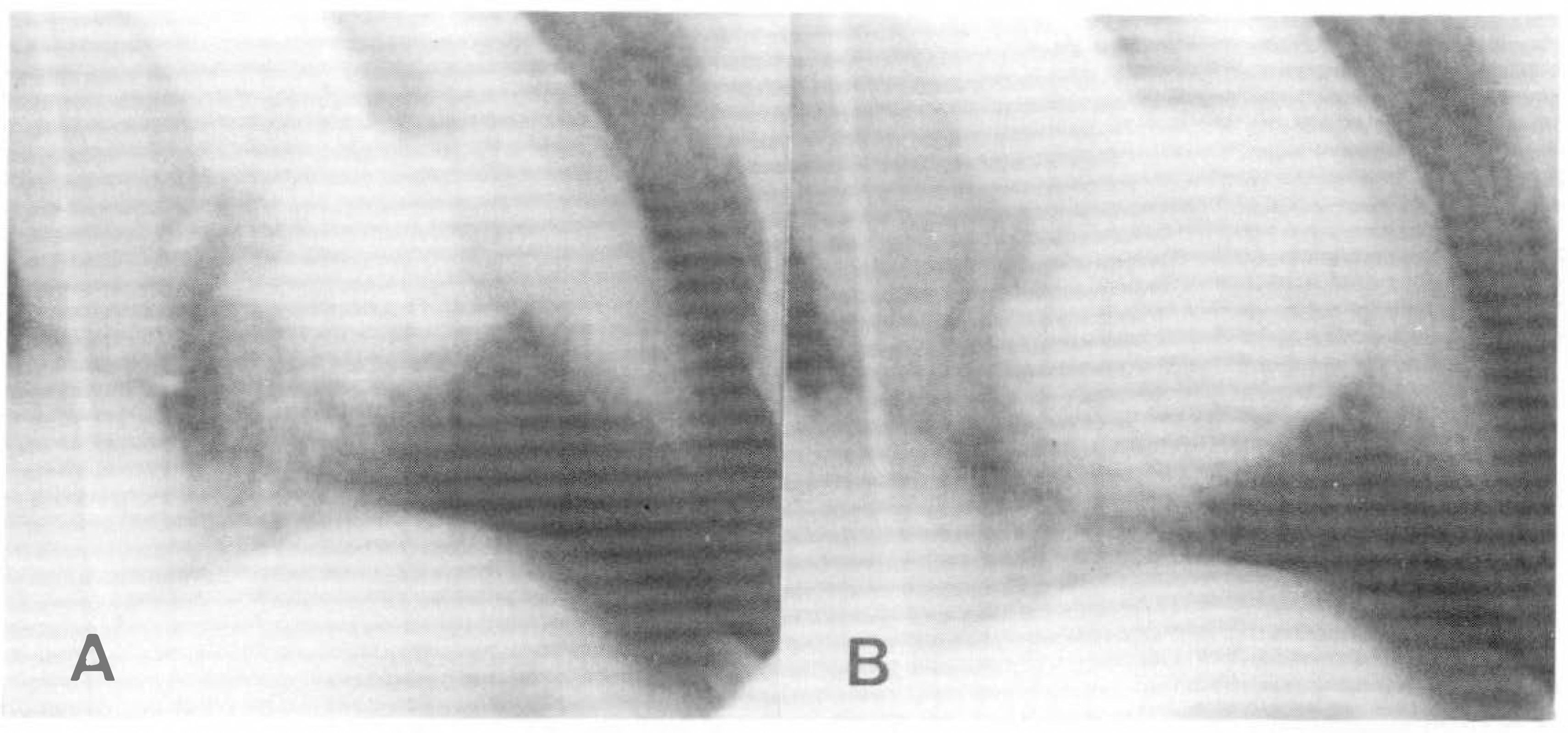J Korean Soc Echocardiogr.
1994 Jul;2(1):88-95. 10.4250/jkse.1994.2.1.88.
2 Cases of Apical Hypertrophic Cardiomyopathy with Left Ventricular Endomyocardial Calcification
- Affiliations
-
- 1Department of Internal Medicine, Chonnam University Medical School, Kwangju, Korea.
- KMID: 2410464
- DOI: http://doi.org/10.4250/jkse.1994.2.1.88
Abstract
- Calcification of myocardium is most common in the site of an old infarction or in an aneurysmal wall. In addition, Myocardial calcification may occur in association with endomyocardial fibrosis and hyperparathyroidism, as a result of focal toxic or inflammatory myocardial necrosis, as well as in patients undergoing hemodialysis. Calcium deposits due to parasites and due to neoplastic disease may also be seen, But, left ventricular endomyocardial calcification associated with apical hypertrophic cardiomyopathy is very rare. This report describes 2 cases of apical hypertrophic cardiomyopathy with left ventricular endomyocardial calcification, diagnosed by the echocardiographic, angiographic and histologic findings.
MeSH Terms
Figure
Reference
-
References
1). Koestner AW, Bush CA, Baba N. Endomyocardial fibrosis with calcification of the myocardium Arch Pathol Lab Med. 102:406. 1978.2). Silver MA, Bonow RO, Deglin SM, Maron BJ, Cannon RO, Roberts WC. Acquired left ventricular endocardial constriction from massive mural calcific deposits: A newly recognized cause of impairment to left ventricular filling. Am J Cardiol. 53:1468. 1984.
Article3). Bolz KD, Bathen J, Skjaepe T, Halovorsen TB. Massive left ventricular endomyocardial calcification associated with apical hypertrophic cardiomyopathy. Fortschr Geb Rontgenstr Nuklearmed Erganzungsband. 149:436. 1988.
Article4). Terman DS, Alfrey AC, Hammond WS, Donndelinger T, Ogden DA, Holmes JH. Cardiac calcification in uremia. Am J Med. 50:744. 1971.
Article5). Sakamoto T, Tei C, Murayama M, Ichiyasu H, Hada Y, Hayashi T, Amano K. Giant T wave inversion as a manifestation of asymmetrical apical hypertrophy of the left ventricle. Echocardiographic and ultrasonographic study. Jpn Heart J. 17:611. 1976.6). Yamaguchi H, Nakanishi S, Nishijo T, Nagasaki F, Matsumoto S, Ishimura T. Hypertrophic cardiomyopathy with giant negative T wave Jpn Circ J. 40(suppl):110. 1976.7). Yamaguchi H, Ishimura T, Nishiyama S, Nagasaki F, Nakanishi S, Takatsu F, Nishijo T, Umeda T, Machii K. Hypertrophic nonobstructive cardiomyopathy with giant negative T waves(Apical hypertrophy): ventriculgraphic and echocardiographic features in 30 patients. Am J Cardiol. 44:401. 1979.8). Maron BJ. Apical hypertrophic cardiomyopathy: The continuing saga. J Am Coll Cardiol. 15:91. 1990.
Article9). Webb JG, Sasson Z, Rakowski H, Liu P, Wigle ED. Apical hypertrophic cardiomyopathy: Clinical follow-up and diagnostic correlates. J Am Coll Cardiol. 15:83. 1990.
Article10). Louie EK, Maron BJ. Apical hypertrophic cardiomyopathy: Clinicakl and two-dimensional echocardiographic assessment. Ann Intern Med. 106:663. 1987.11). 이명곤 • 박종수 • 안영근 · 박주형 ‘ 정명호 • 조정 판 • 박종훈 • 강정채. 원발성 비후형 십근중에서 심근비후 형태에 따른 임상상의 추이. 대한내과학 회지. 45:456. 1993.12). Kvaerness J, Rinck PA, Bolz KD, Bathen J, Skjaerpe T. MR imaging of apical hypertrophic cardiomyopathy with left ventricular endomyocardial calcification. J Comput Assist Tomogr. 15:489. 1991.13). Ross EM, Rosing DR, McGuire LB, Maron BM, Roberts WC. Impaired left ventricular systolic and diastolic dilatation associated with papillary muscle calcification in hypertrophic cardiomyopathy. Am J Cardiol. 15:488. 1986.
- Full Text Links
- Actions
-
Cited
- CITED
-
- Close
- Share
- Similar articles
-
- A Case of Regressed Apical Hypertrophic Cardiomyopathy
- Apical Hypertrophic Cardiomyopathy with Apical Aneurysm and Thrombus Diagnosed by Contrast Echocardiography
- 4 Cases of Midventricular Obstructive Hypertrophic Obstructive Cardiomyopathy
- Mid-Ventricular Hypertrophic Obstructive Cardiomyopathy Complicated by an Apical Aneurysm, Presenting as Ventricular Tachycardia
- A Case of Apical Hypertrophic Cardiomyopathy which Evolved from a Diffuse Left Ventricular Hypertrophy: 6 Year Follow Up

